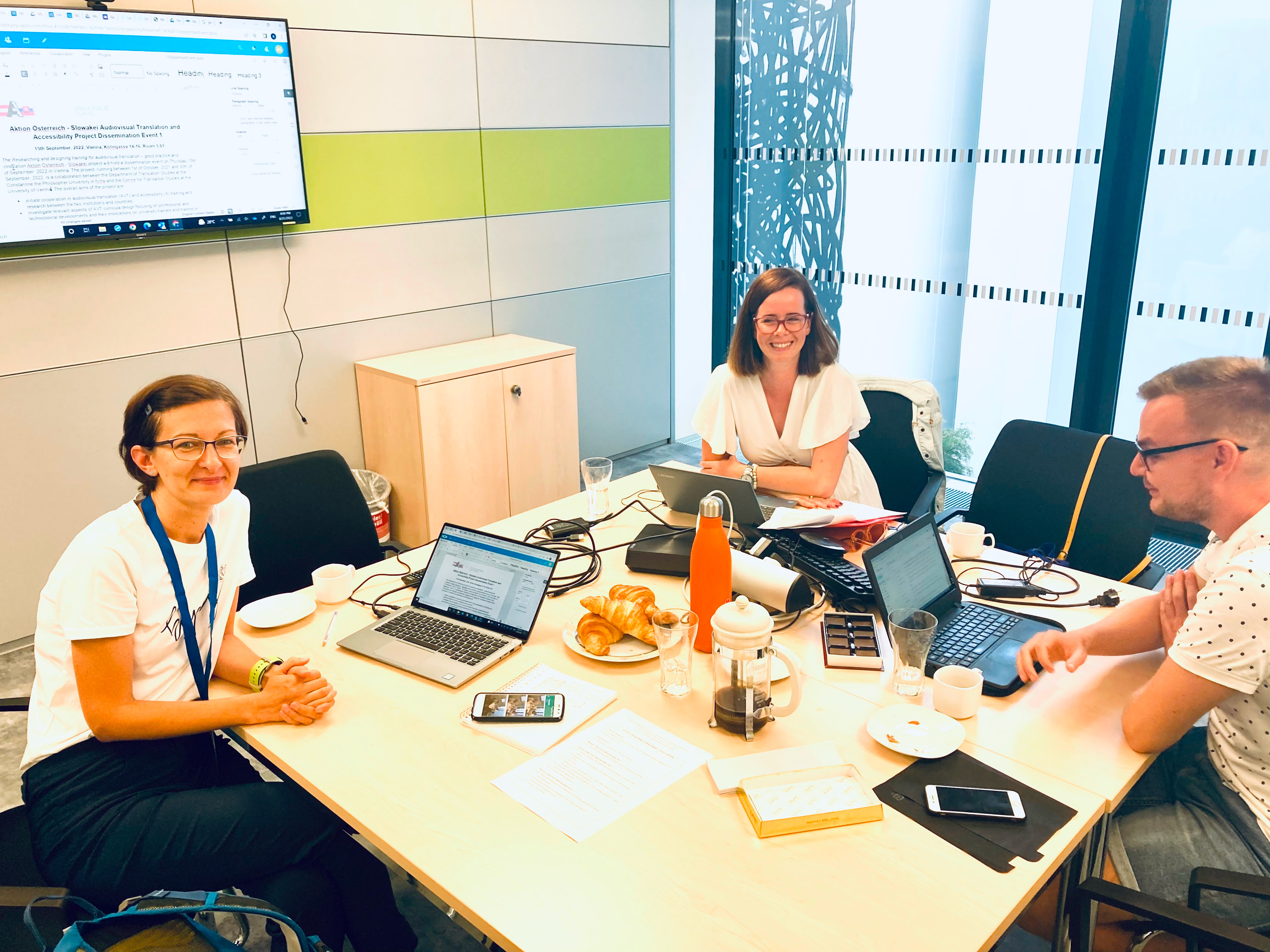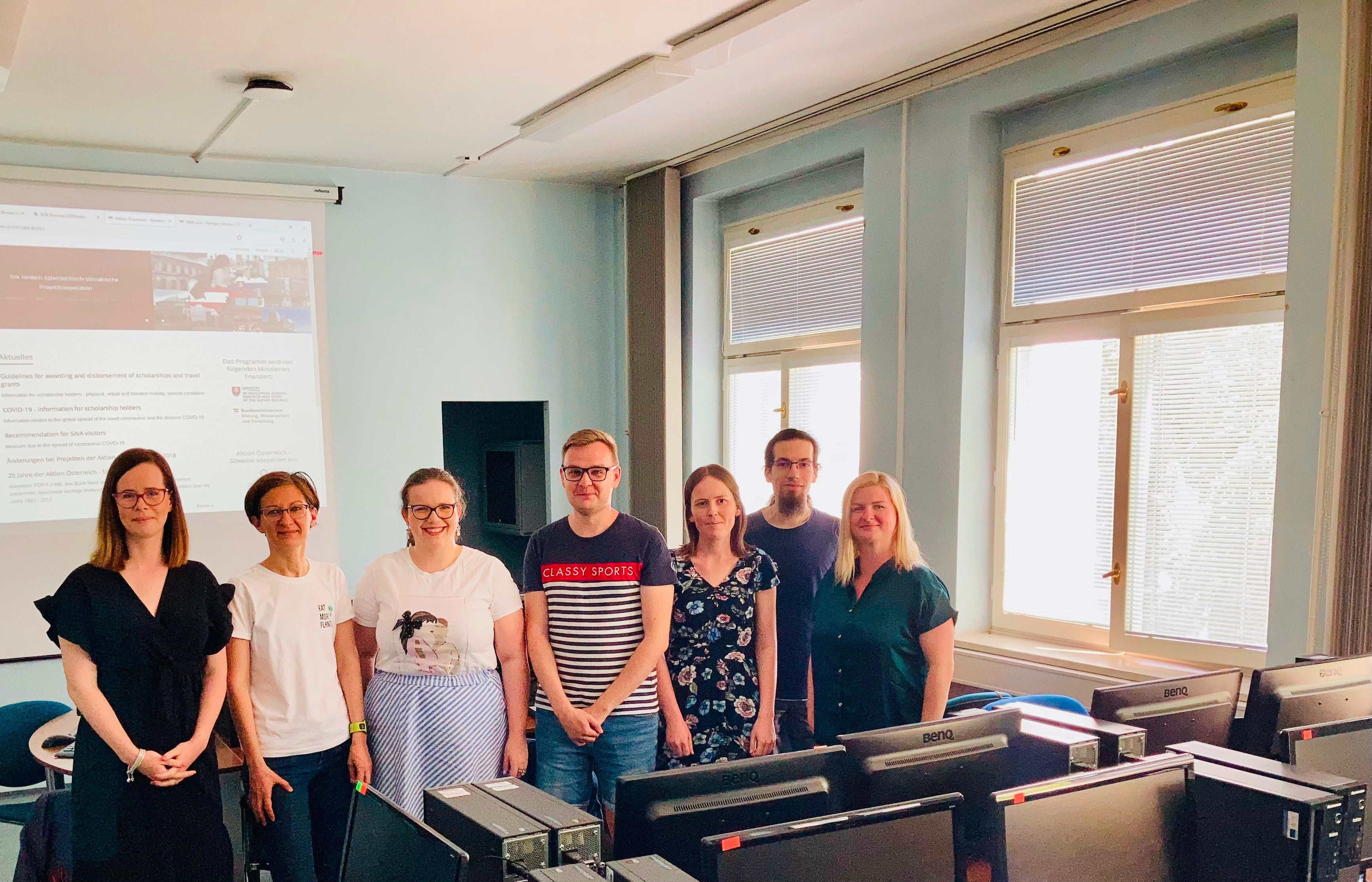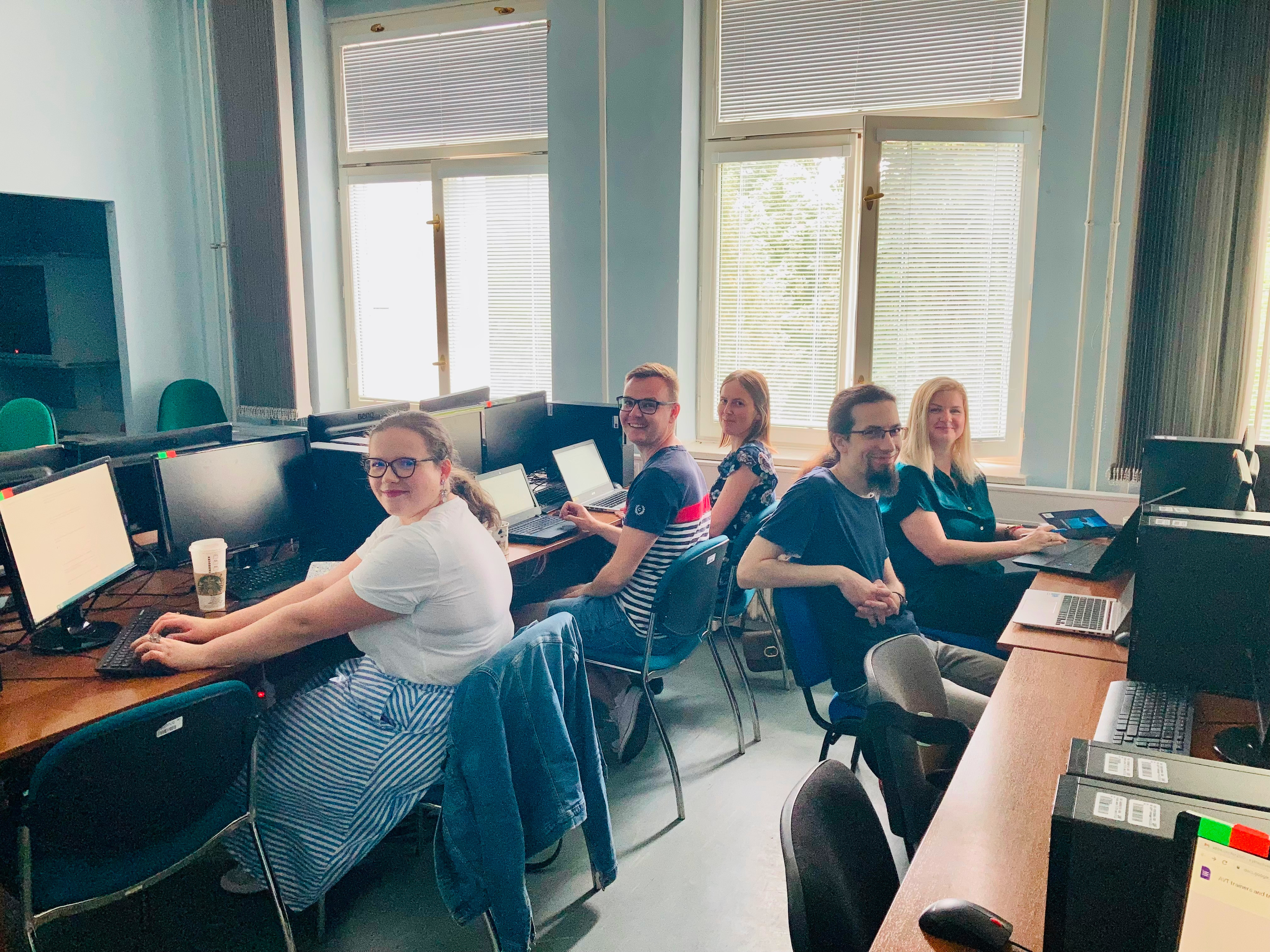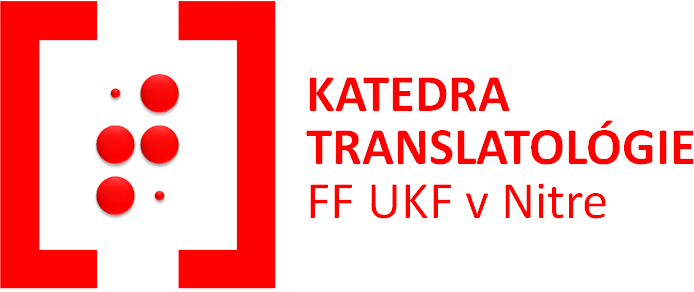 Project Researching and designing training for audiovisual translation – good practice and innovation (AT Ö-SR 2021-05-15-002) was a year-long collaboration of the Department of Translation Studies at the Constantine the Philosopher University in Nitra and the Centre for Translation Studies at the University of Vienna. It ran from October 2021 to October 2022. It sought to initiate cooperation in audiovisual translation (AVT) and accessibility (A) training and research between the two institutions and countries, with the main focus on designing curricula and innovation in these fields. The project analysed the professional, technological and cultural developments in both countries, as well as globally, and reflected upon their implications on AVT & A training in the region.
Project Researching and designing training for audiovisual translation – good practice and innovation (AT Ö-SR 2021-05-15-002) was a year-long collaboration of the Department of Translation Studies at the Constantine the Philosopher University in Nitra and the Centre for Translation Studies at the University of Vienna. It ran from October 2021 to October 2022. It sought to initiate cooperation in audiovisual translation (AVT) and accessibility (A) training and research between the two institutions and countries, with the main focus on designing curricula and innovation in these fields. The project analysed the professional, technological and cultural developments in both countries, as well as globally, and reflected upon their implications on AVT & A training in the region.
 The project aimed to investigate the AVT and A training landscapes in Austria (AT) and Slovakia (SK), as well as to examine current needs and skills of AVT and A trainers in them, concentrating specifically on the use of technology. To achieve the project deliverables, participants held two meetings between June and September 2022, one in Nitra and the other in Vienna, and additionally organised two dissemination events. The first took place in Vienna on 15 September 2022 and sought to bring together trainers and researchers from Austria and Slovakia with a view toward exchanging best AVT and A practice, as well as disseminating the results from the project questionnaire investigating main AVT and A topics taught in the two countries, the level of trainers’ experience in these topics, use of AVT and A technology, and finally the main opportunities and threats trainers see in teaching AVT and A. The second dissemination event took place in Nitra a week later, on 22 September 2022, and it provided a workshop focusing on technology as a challenge in AVT and A training, as well as a discussion on curriculum design, implementation and assessment practices. Both dissemination events addressed issues and challenges brought forward by AVT and A trainers, discussed case studies where these topics appeared in university modules in Slovakia and Austria, provided links to possible useful resources, and exchanged good practices.
The project aimed to investigate the AVT and A training landscapes in Austria (AT) and Slovakia (SK), as well as to examine current needs and skills of AVT and A trainers in them, concentrating specifically on the use of technology. To achieve the project deliverables, participants held two meetings between June and September 2022, one in Nitra and the other in Vienna, and additionally organised two dissemination events. The first took place in Vienna on 15 September 2022 and sought to bring together trainers and researchers from Austria and Slovakia with a view toward exchanging best AVT and A practice, as well as disseminating the results from the project questionnaire investigating main AVT and A topics taught in the two countries, the level of trainers’ experience in these topics, use of AVT and A technology, and finally the main opportunities and threats trainers see in teaching AVT and A. The second dissemination event took place in Nitra a week later, on 22 September 2022, and it provided a workshop focusing on technology as a challenge in AVT and A training, as well as a discussion on curriculum design, implementation and assessment practices. Both dissemination events addressed issues and challenges brought forward by AVT and A trainers, discussed case studies where these topics appeared in university modules in Slovakia and Austria, provided links to possible useful resources, and exchanged good practices.
 The outcomes of aforementioned activities can be found in the publication Designing training for audiovisual translation – good practice and innovation in Austria and Slovakia. It contains findings of the survey conducted by the project participants and provides a summary of the main topics from the focussed discussions with trainers during the dissemination events. These include tips on using technology in AVT and A, assessment practices and how to integrate collaborations with external partners from the industry or the third sector in the classroom. Finally, two case studies are offered where AVT and A training was implemented at two universities, describing their training methodologies and designs.
The outcomes of aforementioned activities can be found in the publication Designing training for audiovisual translation – good practice and innovation in Austria and Slovakia. It contains findings of the survey conducted by the project participants and provides a summary of the main topics from the focussed discussions with trainers during the dissemination events. These include tips on using technology in AVT and A, assessment practices and how to integrate collaborations with external partners from the industry or the third sector in the classroom. Finally, two case studies are offered where AVT and A training was implemented at two universities, describing their training methodologies and designs.
Project was funded by the Action Austria-Slovakia, within framework Cooperation in Science and Education.


